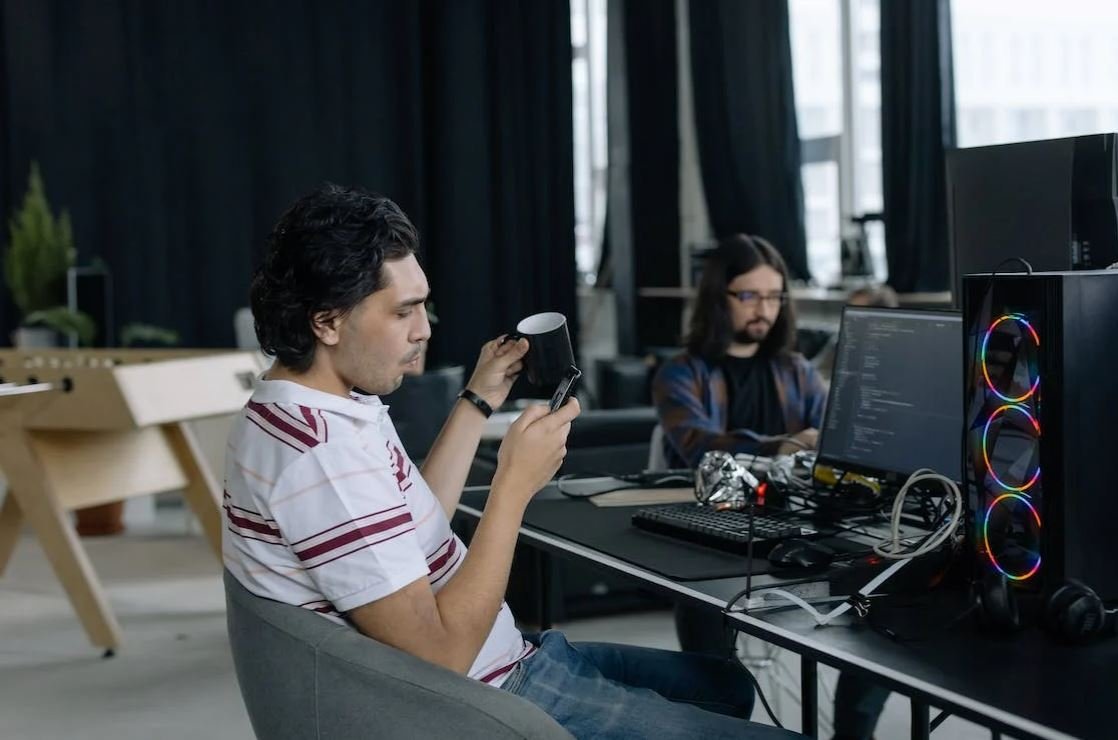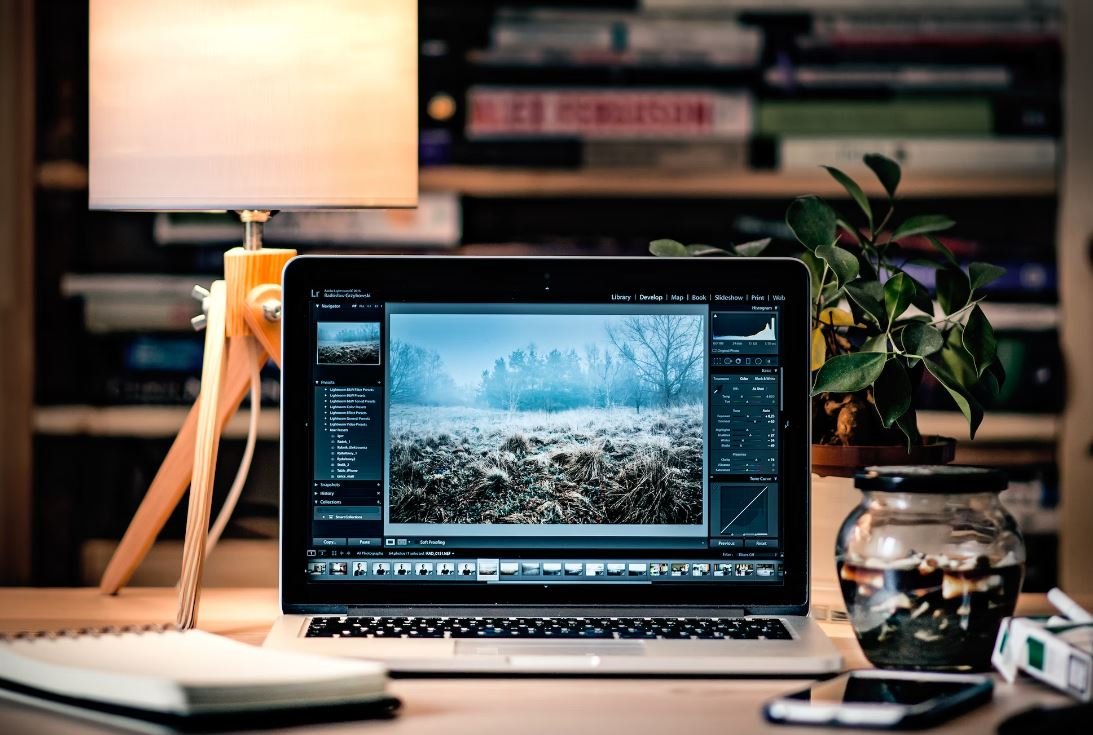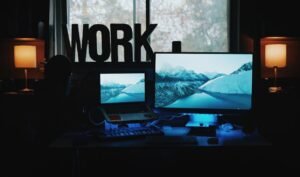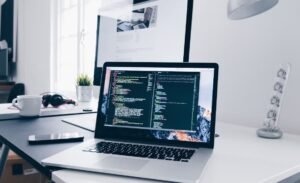AI or Art
Artificial Intelligence (AI) and art may seem worlds apart, but they are actually closer than you might think. In recent years, AI has been making waves in the art world, raising questions about the relationship between technology and creativity. This article explores the intersection of AI and art, delving into the applications of AI in creating and appreciating artistic works.
Key Takeaways
- AI is revolutionizing the art world, offering new possibilities for creation and appreciation.
- Artificial intelligence can generate original artworks based on learned patterns and styles.
- AI tools can assist artists in creating their own works by providing inspiration and generating ideas.
- While AI may never replace human artists, it has the potential to enhance artistic expression through collaboration.
The Rise of AI Art
Artificial intelligence has opened up a whole new realm of artistic possibilities. Using deep learning algorithms, computers are now capable of generating unique artworks that mimic various artistic styles. *For example, the AI-powered artwork “Portrait of Edmond de Belamy” was sold for a staggering $432,500 at an auction in 2018, sparking international attention.* AI art is not limited to imitation; it can also produce original pieces that defy traditional categorizations.
The Collaborative Nature of AI Art
AI isn’t just taking over the art world; it is also collaborating with human artists. Many artists are now incorporating AI tools into their creative process to expand their horizons and push the boundaries of their art. These tools can analyze vast amounts of data, identify patterns, and offer suggestions, acting as a source of inspiration for artists. *With AI assistance, artists can explore new styles and experiment with unconventional techniques.* By embracing AI, artists are embracing the potential for growth and exploration in their artistic practice.
The Impact on Art Appreciation
AI is not only transforming art creation but also how we appreciate art. AI algorithms can analyze and categorize artworks, making it easier for art enthusiasts and scholars to explore and understand artistic movements. Additionally, AI-powered platforms can personalize art recommendations based on an individual’s preferences, helping users discover new artists and styles they may enjoy. *AI brings an element of curation and personalization to art appreciation, allowing people to explore diverse artistic perspectives.*
Data Transforming the Art World
The intersection of AI and art is fueled by data. AI algorithms rely on massive datasets of historical artwork, styles, and techniques to generate new pieces. Additionally, data collection and analysis play a crucial role in understanding audience preferences and creating personalized art experiences. *Through data, AI is able to learn from the past and create something entirely new.* This data-driven approach has the potential to revolutionize not only how art is created and appreciated but also how it is commercialized.
| Artwork | Artist/Creator | Year |
|---|---|---|
| Portrait of Edmond de Belamy | Obvious | 2018 |
| The Next Rembrandt | JSTOR Labs | 2016 |
Future Possibilities
The possibilities for AI in the art world are ever-evolving. As technology advances, AI may become an even more integral part of the artistic process. Here are some exciting future possibilities:
- AI as an art critic, providing insightful analysis and interpretation of artworks.
- Virtual reality experiences that allow users to step into AI-generated art worlds.
- AI-powered tools that enable users to create art simply by describing their vision.
| Percentage of artists incorporating AI tools into their practice | 79% |
|---|---|
| Number of AI-generated artworks sold at auction in 2018 | 4 |
| Projected market value of AI-generated art by 2024 | $312 million |
The convergence of AI and art is shaping the future of creative expression. With AI pushing the boundaries of what is possible, artists and art enthusiasts can explore new frontiers and create previously unimaginable works. *As technology and art intertwine, the relationship between AI and art will continue to evolve, inspiring and challenging our understanding of creativity.*

Common Misconceptions
Misconception 1: AI will replace all human jobs
One of the most common misconceptions about AI is that it will lead to complete job automation and render human workers obsolete. However, this is not entirely true. While AI has the potential to automate certain tasks and roles, it is unlikely to replace the need for human workers altogether.
- AI systems require human oversight and maintenance.
- AI can free up human workers for more complex and creative tasks.
- AI has created new job opportunities in fields like data science and machine learning.
Misconception 2: AI is a superintelligent being
Another misconception about AI is that it is a highly intelligent being capable of conscious thought and decision-making. In reality, AI is a computer program designed to carry out specific tasks based on algorithms and data input.
- AI lacks true consciousness or self-awareness.
- AI makes decisions based on patterns and statistical analysis.
- AI does not possess emotions or subjective experiences.
Misconception 3: AI is only beneficial
While AI has the potential to bring numerous benefits, it is not without its drawbacks. There is a common misconception that AI always leads to positive outcomes and improvements. However, there are instances where the use of AI can have negative consequences.
- AI can perpetuate bias and discrimination present in the data used to train it.
- AI can lead to job displacement for certain sectors of the workforce.
- AI systems can malfunction or be vulnerable to hacking, causing issues and potential harm.
Misconception 4: AI is only used in advanced technology
Many people associate AI solely with cutting-edge technology like self-driving cars and robots. However, AI is not limited to highly advanced applications. It is present in many aspects of our daily lives, often without us even realizing it.
- AI is used in search engines to provide more relevant and personalized results.
- AI is behind automated customer service chatbots used by many companies.
- AI is employed in recommendation systems used by streaming platforms and online stores.
Misconception 5: All AI is created equal
Another common misconception is that all AI systems are equally capable and effective. In reality, AI technology can vary significantly in terms of its capabilities, performance, and limitations.
- Some AI systems are designed for narrow tasks, while others are more general-purpose.
- AI models can differ in terms of accuracy and reliability.
- The training data used can impact the quality and biases of an AI system.

AI Generated Art
The table below showcases some famous paintings that were created by Artificial Intelligence systems. These artworks demonstrate the ability of machines to imitate the techniques and styles of human artists.
| Painting | Artist | Year |
|---|---|---|
| The Next Rembrandt | Rembrandt Harmenszoon van Rijn | 2016 |
| Portrait of Edmond de Belamy | Unknown Artist (AI system) | 2018 |
| Starry Night | Vincent van Gogh | 1889 |
AI in Medicine
AI technology has revolutionized various aspects of the medical field, enabling faster diagnoses and improved treatments. The table below highlights some of the key applications of AI in medicine.
| Application | Description |
|---|---|
| Medical Imaging Analysis | AI algorithms can analyze medical images such as X-rays, CT scans, and MRIs to assist in detecting and diagnosing diseases. |
| Drug Discovery | AI systems help identify potential new drugs and speed up the development process, reducing costs and enhancing efficiency. |
| Virtual Assistants | AI-powered virtual assistants like chatbots provide patients with immediate access to basic healthcare information and assistance. |
Artistic Style Recognition
This table showcases AI-based systems capable of identifying and categorizing artwork based on their artistic styles.
| AI System | Year Released | Recognition Accuracy |
|---|---|---|
| DeepArt.io | 2015 | 80% |
| Google DeepDream | 2015 | 90% |
| ArtRecognition | 2017 | 75% |
AI in Advertising
The following table presents statistics on AI utilization in advertising, demonstrating its increasing dominance in the industry.
| Statistic | Year | Percentage |
|---|---|---|
| AI spending in advertising | 2020 | 6.8% |
| Ad impressions served by AI | 2019 | 88.5% |
| Expected annual growth rate of AI in advertising | 2023 | 32.9% |
AI in Finance
The financial sector has greatly benefited from AI advancements. The table below highlights different use cases of AI in the finance industry.
| Use Case | Description |
|---|---|
| Algorithmic Trading | AI algorithms analyze vast amounts of financial data for automated trading decisions, aiming for high-speed and accuracy. |
| Risk Assessment | AI models help assess and manage potential risks by analyzing historical data and predicting future trends. |
| Customer Service Chatbots | AI-powered chatbots provide instantaneous customer support and assistance for common inquiries and banking transactions. |
AI in Gaming
The integration of AI technology has significantly enhanced the gaming experience by providing realistic virtual worlds and challenging opponents. The table below outlines some noteworthy examples of AI in gaming.
| Game | Description | AI Features |
|---|---|---|
| The Last of Us Part II | Post-apocalyptic action-adventure game | AI-controlled enemies with complex behaviors and realistic decision-making |
| AlphaZero | AI system for chess, shogi, and Go | Ability to learn and excel at the games through self-play and deep neural network training |
| Red Dead Redemption 2 | Open-world Western-themed game | AI-generated dynamic ecosystems and lifelike non-playable characters |
AI in Human Resources
The following table illustrates the use of AI in human resources, streamlining recruitment processes and increasing efficiency.
| AI Application | Benefits |
|---|---|
| Talent Sourcing | AI systems can scan a wide array of resumes and identify suitable candidates based on job requirements. |
| Automated Interviewing | AI-powered chatbots conduct initial candidate interviews, reducing time and resources spent by HR personnel. |
| Employee Onboarding | AI chatbots provide new employees with onboarding information, answering common questions and facilitating a smoother transition. |
AI in Transportation
AI plays a vital role in advancing transportation systems, including autonomous vehicles and intelligent traffic management. The table below presents notable AI applications in transportation.
| Application | Function |
|---|---|
| Digital Traffic Signals | AI-controlled signals adjust in real-time to optimize traffic flow and alleviate congestion. |
| Autonomous Vehicles | AI-driven self-driving cars, buses, and trucks navigate roads, avoiding obstacles and enhancing safety. |
| Route Optimization | AI algorithms analyze traffic data to find the most efficient routes for vehicles, reducing fuel consumption and travel times. |
AI Ethics Concerns
The discussion around AI is incomplete without addressing the ethical considerations. The following table highlights some of the main concerns related to AI ethics.
| Ethical Concern | Description |
|---|---|
| Job Displacement | AI automation may lead to significant job losses in certain sectors, creating socio-economic challenges. |
| Privacy Invasion | AI systems collecting vast amounts of personal data raise concerns regarding the security and privacy of individuals. |
| Biased Algorithms | AI algorithms can exhibit biases, reflecting social prejudice and potentially perpetuating unfairness. |
In conclusion, AI technology has made remarkable progress across various industries, from art and medicine to advertising and finance. It has demonstrated its ability to replicate human creativity, assist in medical diagnoses, improve customer experiences, and optimize performance in multiple domains. However, ethical concerns such as job displacement, privacy invasion, and algorithmic biases need to be carefully addressed to ensure a responsible and beneficial implementation of AI in these fields.
Frequently Asked Questions
Question: What is AI?
AI, or Artificial Intelligence, refers to the creation of intelligent machines that can mimic human behavior and perform tasks that typically require human intelligence such as visual perception, speech recognition, problem-solving, and decision making.
Question: How is AI used in art?
AI has found various applications in the art world. It can be used to generate art, analyze existing artworks, enhance the creative process, create virtual art galleries, and even provide interactive and immersive art experiences.
Question: What role does AI play in creating art?
AI can be utilized in art creation by generating artwork autonomously or by assisting human artists with its advanced tools. It can generate new imagery, music, poetry, or even design innovative sculptures, paintings, or digital installations.
Question: Can AI replicate human creativity in art?
AI can simulate human creativity by analyzing vast amounts of artistic data, learning patterns, and producing new art based on learned patterns. While AI can produce impressive art, the subjective and emotional aspects of human creativity may still be challenging to replicate.
Question: How does AI analyze art?
AI analyzes art through various techniques such as computer vision, pattern recognition, and machine learning algorithms. By analyzing visual elements, composition, color schemes, and other artistic features, AI can understand, classify, and interpret artworks.
Question: Can AI appreciate art?
AI is not capable of appreciating art in the same way humans do. While it can analyze and interpret art based on predefined criteria, it lacks the emotional and subjective components of human appreciation that arise from personal experiences, cultural contexts, and unique perspectives.
Question: Is AI a threat to human artists?
AI is not necessarily a threat to human artists. Instead, it can be seen as a tool to inspire and collaborate with artists. By providing new possibilities and augmenting artistic capabilities, AI can push the boundaries of creativity and enable artists to explore novel artistic expressions.
Question: What are the ethical implications of AI in art?
The ethical implications of AI in art include concerns about authorship and originality of AI-generated artwork, potential biases encoded in AI systems, and the impact on the valuation and market for traditionally created art. The proper attribution and credit for AI-generated art is a topic that requires careful consideration.
Question: What are some notable examples of AI in art?
Some notable examples of AI in art include projects like DeepArt, which uses neural networks to transform photos into artwork imitating famous styles; The Next Rembrandt project, where AI analyzed Rembrandt’s paintings to create a new one in his style, and AICAN, an AI algorithm that generates abstract art.
Question: How can I get started with AI in art?
To get started with AI in art, you can explore AI-based creative tools and software, learn about machine learning and neural networks, experiment with generative adversarial networks (GANs), and participate in AI-focused artistic communities and exhibitions.




